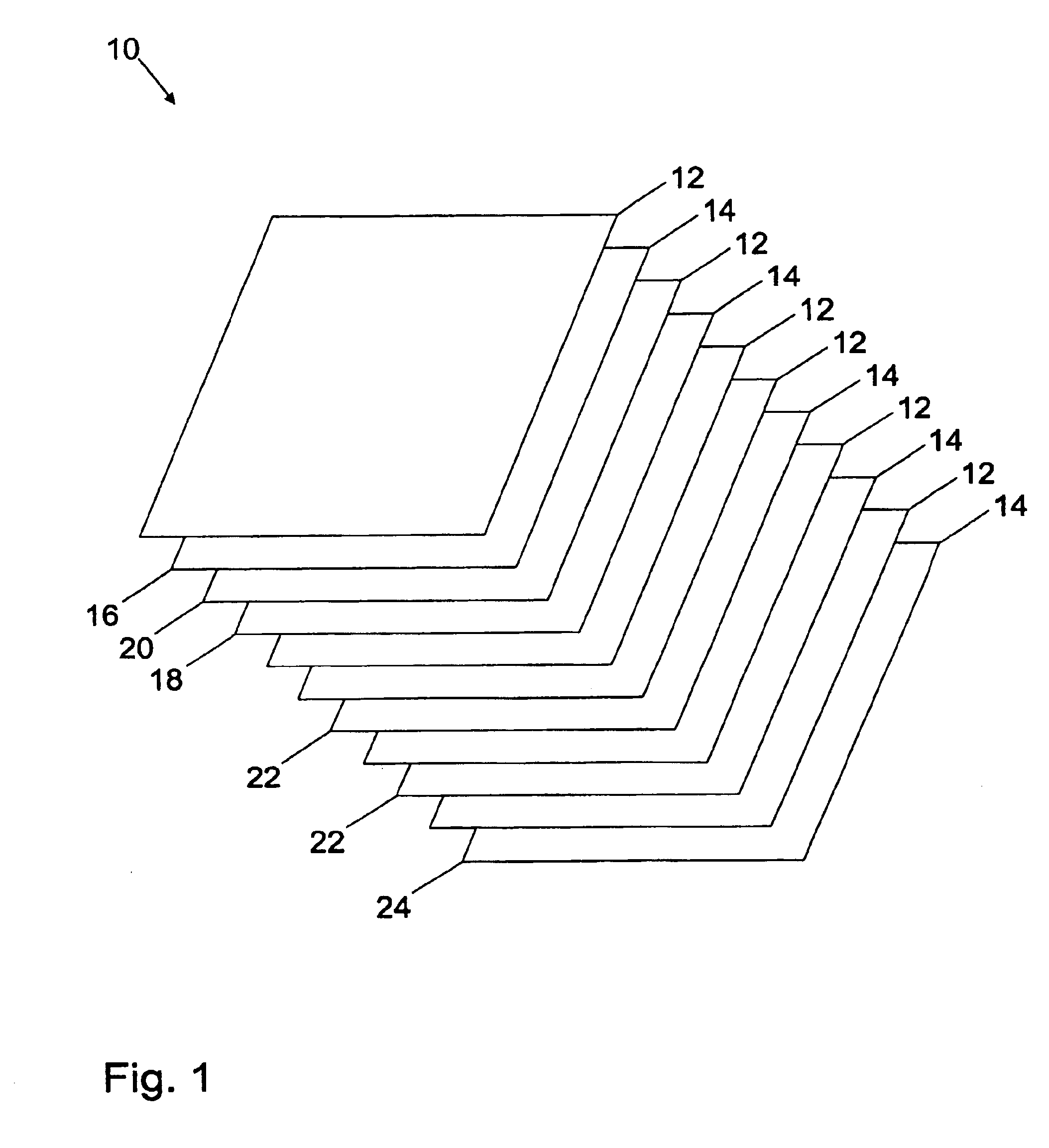Printed circuit board noise attenuation using lossy conductors
a technology of lossy conductors and printed circuit boards, which is applied in cross-talk/noise/interference reduction, line-transmission details, waveguide type devices, etc., can solve problems such as affecting the normal operation of circuitry, inducing electric current or electromagnetic interference (emi), and increasing switching noise at higher frequencies. , to achieve the effect of attenuating noise and attenuating nois
- Summary
- Abstract
- Description
- Claims
- Application Information
AI Technical Summary
Problems solved by technology
Method used
Image
Examples
Embodiment Construction
In accordance with the present invention, a method and related device are disclosed for isolating paired power and ground plane layers from dielectric (or electrically insulating) layers within a printed circuit board (PCB) with thin, lossy laminates, or layers of material relatively low in conductivity when compared to adjacent conductive layers. Referring now to FIG. 1, the present invention may be better understood by understanding a few key aspects of printed circuit boards. To form a printed circuit board 10, insulating layers 12 and conductive layers 14 are laminated together, generally with one or more insulating layers 12 separating each conductive layer 14. Insulating layers 12 are generally made of a ceramic, such as alumina, or other dielectric material, such as FR-4, a glass epoxy resin commonly used in printed circuit board fabrication. Conductive layers 14 are generally made of a metal with a high electrical conductivity, such as copper (Cu) or tungsten (W). One of the...
PUM
 Login to View More
Login to View More Abstract
Description
Claims
Application Information
 Login to View More
Login to View More - R&D
- Intellectual Property
- Life Sciences
- Materials
- Tech Scout
- Unparalleled Data Quality
- Higher Quality Content
- 60% Fewer Hallucinations
Browse by: Latest US Patents, China's latest patents, Technical Efficacy Thesaurus, Application Domain, Technology Topic, Popular Technical Reports.
© 2025 PatSnap. All rights reserved.Legal|Privacy policy|Modern Slavery Act Transparency Statement|Sitemap|About US| Contact US: help@patsnap.com



